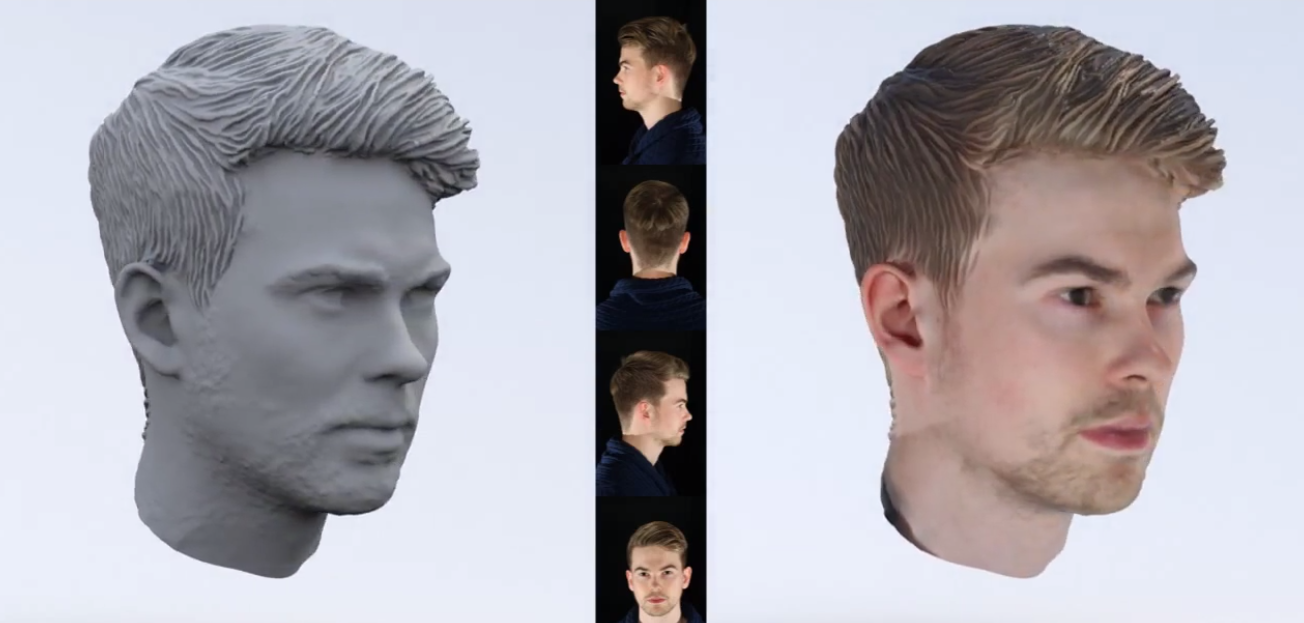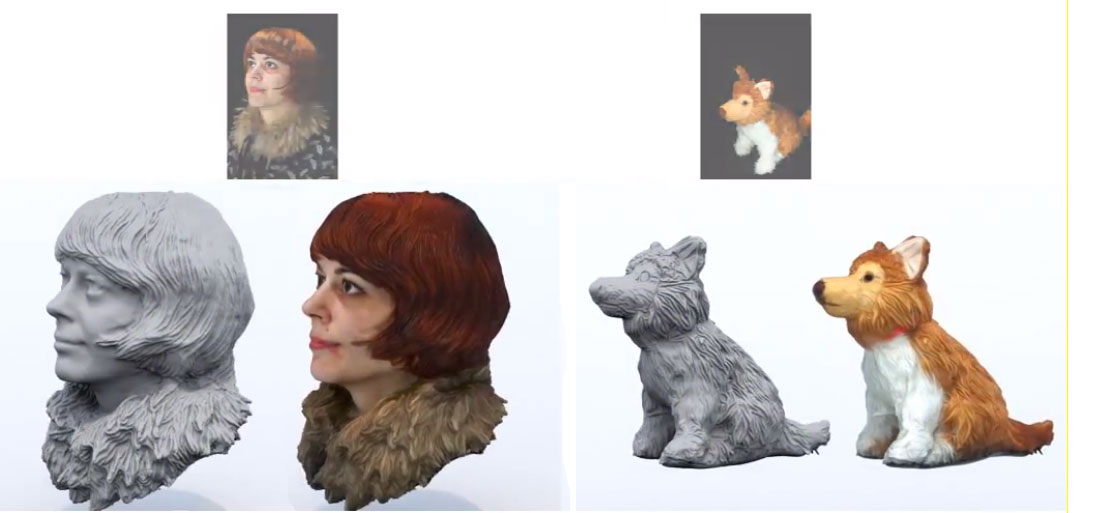The Researchineers at Disney Research in Zurich have finally cracked the toughest part of 3D scanning, capturing a subject’s hair. Their new 3D scanning method adds three simple steps to the scanning process, enabling a subject’s hair to be captured as accurately as the rest of their face and body.
Ask anyone who uses a 3D scanner to capture people regularly what the hardest part of the process is and their answer might just be capturing hair correctly. 3D scanners have become more and more powerful, yet they often flounder when it comes to capturing such fine fibers, often requiring extensive corrections in 3D editing programs or simply adding on pre-rendered hair.
But Disney understands that hair is just as vital as an accurate face to recognizing a person, so their researchers have devised a way to accurately capture even the most complex hairstyle and allow it to be reproduced flawlessly. Here is a brief video overview of the new process:

The first step involves taking several color photographs of the subject and then calculating the rough geometry of their hair. Then, the computer removes a level of detail from the 3D scan of the hair. By removing digital information and making the scan less detailed, the computer processing the information is able to make the file more manageable and easily convert the scan to a 3D model. This allows the hair to be miniaturized, without losing the shape and style. The final color stylization step is then combined with the hair’s geometric detail, creating a highly precise 3D render of the subject’s hair.The system was demonstrated with several complex hairstyles and can also work on facial hair, body hair, fur and even plush stuffed animals.
The process was inspired by the methods used by both real world sculptures and digital sculptures to create realistic looking hair. Rather than carve each hair individually, a sculptor will carve the general shape of the hair, removing needless detail and, instead, rely on the shape and sense of movement to fool the eye into seeing a complex hairstyle. I learned a similar technique in art class when attempting to draw the hair on people’s heads. My instinct was to draw each hair as it started on the head and fell down along the subject’s body, this is too complicated, though, and just made the drawing look unnatural.But when I just drew a basic shape and only added detail at certain points, the hair paradoxically looked much more realistic and natural, just as these 3D scans do.
The Disney Research team will present their new 3D scanning method at the International Conference on Computer Graphics and Interactive Techniques ACM SIGGRAPH 2014 in Vancouver Canada this week. You can read more about the new 3D scanning technique on the Disney Research’s website, and you can download the paper giving a detailed explanation of the process here.






